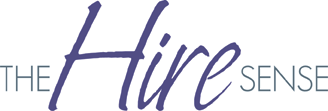November 12, 2008
The Extended Unemployment Rate
The Bureau of Labor Statistics has put out their numbers for October and the unemployment rate rose to 6.5% and non-farm employment fell by 240,000. The job losses occurred across all industries other than healthcare, which rose by 26,000 for the month. Not surprising, the Healthcare industry has grown in employment by almost 350,000 in the past year alone. Manufacturing took the biggest fall with over 90,000 losses (27,000 of them are the results of strikes in the aerospace sector) with construction employment second, falling by 49,000.
But reading a post from Liz Wolgemuth over at US News & World Report provided some interesting facts that I had not seen before. The extension of unemployment benefits by 13 weeks is skewing the unemployment data. Here is the quote out of Liz’ post:
In order to receive unemployment benefits, a person must be looking for work, so the extension of benefits is artificially coaxing many people who would no longer be in the workforce at all to say they are still looking for work, just so they can continue to collect benefits. The unintended consequence is that the unemployment rate is boosted faster and further than normal in a recession, making it more likely that policymakers further extend benefits, boosting the deficit and pushing up future tax payments.

 Comments(1)
Comments(1)





